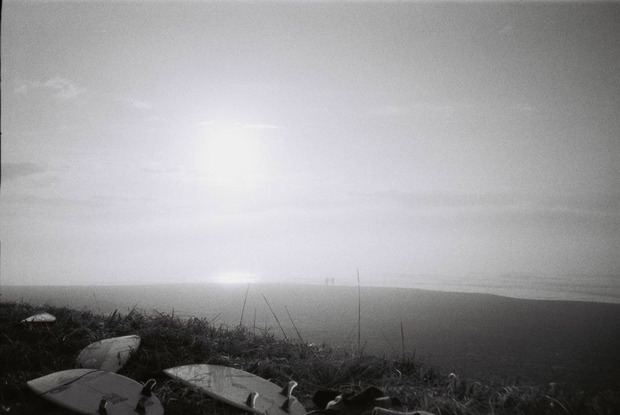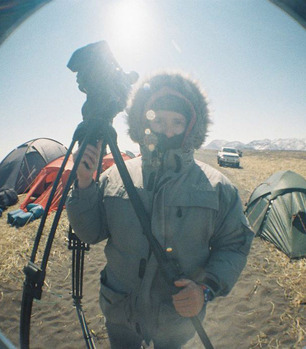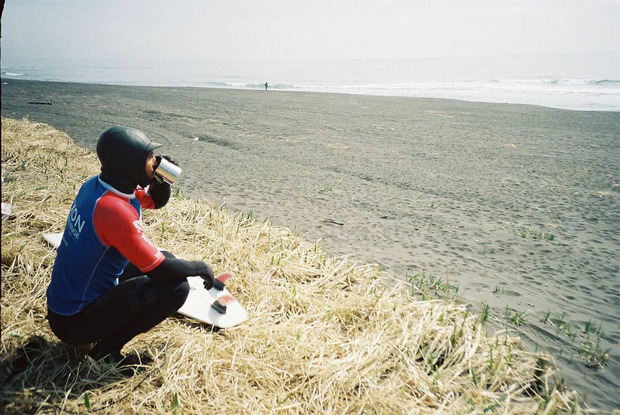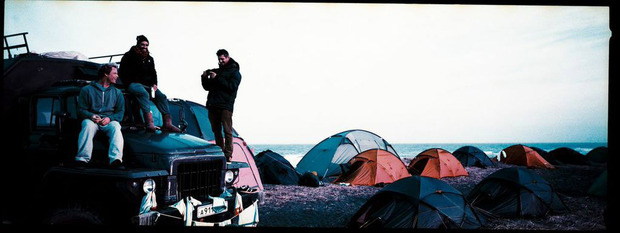Lomography x Nixon: Analog Russia
A chilling surf trip to the country’s northeast coast, captured in film by surfers and photographers alike


In the northeast corner of Russia lies the Kamchatka Peninsula. As beautiful as it is barren, the remote and harsh landscape is sparsely populated and surely an acquired taste for the small but steady number of adventure-seekers that visit year-round. The summers are cool and the winters see raging storms batter the volcanic coast (29 of the 160 are active) where snow is often accompanied by lightning. With the snowpack still melting and water temperatures hovering just above freezing, a band of photographers and surfers ventured to the ends of Russia armed with a host of analog Lomography cameras for the Nixon Surf Challenge. After sorting through the negatives, the best shots of the trip are on display as of today, 24 July, at Lomography’s Soho gallery in London.

“With more than 30 hours of flights on each end, the trip is one of the most intense I have ever experienced,” says digital marketing coordinator, Benjamin Wu Tiu Yen. “We did not really know what to expect in terms of waves, the locals and more generally ‘the life’ out there.” Wu Tiu Yen and the Lomo crew gave cameras to everyone on the trip. With a mix of surfers and photographers, skill levels and photography knowledge varied across the board—making for an intriguing result.


“Surfers can have a really good eye when it comes to taking pictures, but they know nothing about technical aspects of cameras,” Wu Tiu Yen explains. “In the end, the surfers were a group of friends having fun, so I’d say they are able to capture more of the authentic and genuine moments between them.” For quick and easy point-and-shoot capabilities, the surfers were given Lomo’s LC-Wide and Fisheye models. Shooting from the hip (one of Lomo’s core values) doesn’t result in usable shots all the time as Wu Tiu Yen notes, but you’re bound to line up a banger on each roll, especially with the wide-angle lens giving even everyday settings (let alone a burly strip of land in Russia) a shot at photo gold.

There’s a noticeable difference in the work of the photographers on the trip, where experience and technical knowledge came into play. Photographers received more of Lomo’s manual offerings—coincidentally, many of which have their design and manufacturing roots in Russia—a change from their usual DSLR setups. “You take it back to the basics with analog and really focus on the exposure, the aperture, the shutter speed—you can’t erase anything and you can’t really afford burning a roll,” says Wu Tiu Yen. “You tend to take less risk and try instead to be sure you’ll get the shot, but it’s more rewarding when you manage to get a great shot on an analog camera versus a DSLR.” Plus, there’s no need to worry about batteries freezing with the cameras’ robust, rough-and-tumble designs.

Equipment aside, the location played a significant role in the trip. Camping on the beach together, with a fire always burning and pickup soccer games being played (as much to stay warm as to pass time during flat spells), the international band of thrill-seekers became a cohesive unit. And, in terms of getting great shots, this camaraderie and the overall attitude might be the most important part. Of course, the weather doesn’t always cooperate and the ocean can change its mind as quick as a Russian immigration official, but when things line up, it’s perfect when everyone has a camera.
The exhibition opens tonight at 6PM and runs through 14 August at Lomography’s London gallery in Soho.
Images courtesy of Lomography and Nixon












